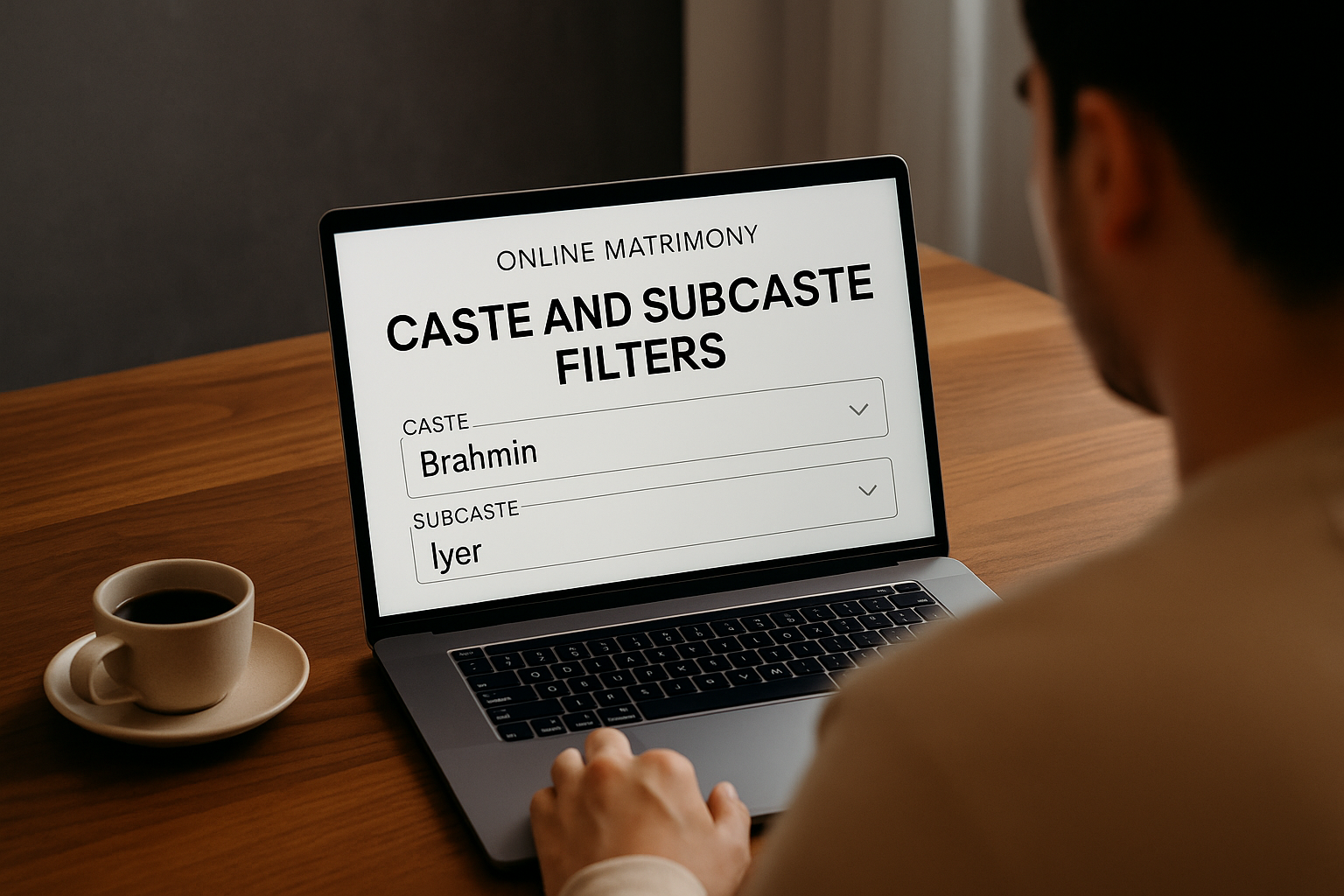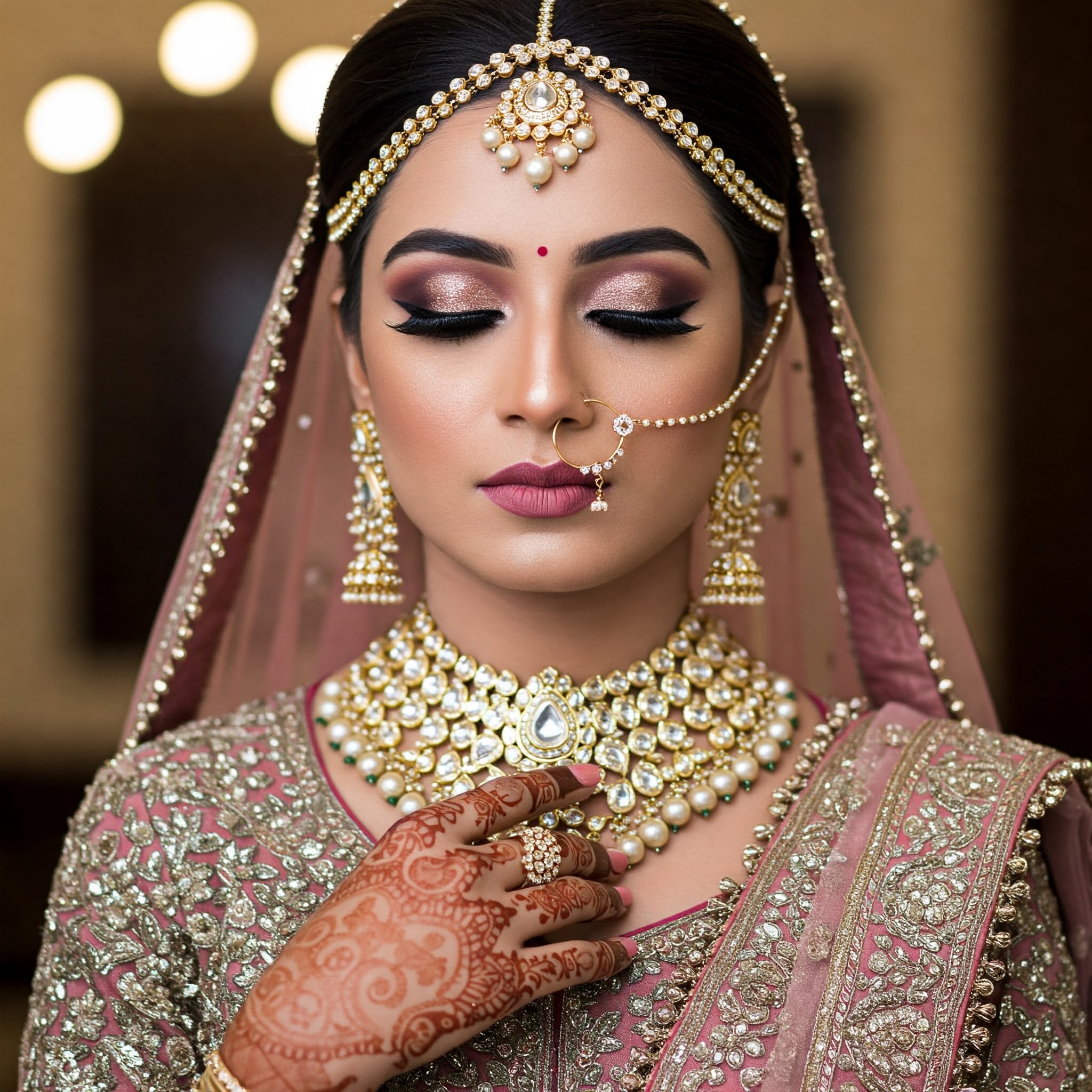
Understanding Caste and Subcaste Filters in Hindu Online Matchmaking
03-Jun-2025 DigiShaadi
In today’s era of digital matchmaking, Hindu singles and their families are increasingly turning to online platforms to find compatible life partners. But while technology has changed how we connect, some cultural touchstones—like caste and subcaste—remain deeply rooted in the matchmaking process.
This blog demystifies caste and subcaste settings in Hindu matrimony sites, offers clear subcaste matchmaking tips, and helps you navigate the fine line between personal choice and cultural tradition. Whether you're new to online matchmaking or simply unsure how to use these filters respectfully and effectively, this guide is for you.
Why Caste Still Matters in Hindu Matchmaking
To understand why caste continues to influence Hindu matrimony, one must appreciate its cultural context. Traditionally, caste wasn’t just a social label; it was linked to customs, rituals, regional identity, and even food habits. Families considered matches within the same caste or subcaste ideal because they often shared similar values, languages, festivals, and expectations from marriage.
Even today, many parents and elders see caste as a proxy for compatibility—not because of social hierarchy, but for cultural familiarity. In modern matchmaking, this translates into filter settings on matrimony websites, allowing users to indicate their caste preferences upfront.
However, it's important to note that not everyone treats caste as a strict requirement anymore. Many urban families are becoming more flexible, focusing on education, personality, and lifestyle compatibility over caste alignment.
For more on the changing mindset in Hindu matchmaking, see How Shared Values Beat Shared Interests in Hindu Matchmaking.
Understanding the Caste and Subcaste Filters
Most Hindu matrimony sites—like DigiShaadi—allow users to select preferences for:
Caste (e.g., Brahmin, Kayastha, Kshatriya, etc.)
Subcaste (e.g., Iyer, Iyengar, Saraswat, Madhwa, etc.)
When setting up your profile, you're typically asked to enter your own caste and subcaste, and then choose whether you are looking for a partner within the same community or are open to others. You may also be given the option to “Show matches from other castes”, depending on your flexibility.
What do these filters actually do?
They help narrow down your match results based on community, which is particularly useful when you're looking for culturally aligned matches. For instance, if you're from the Agarwal community and specify that you're open only to Agarwal or closely related subcastes like Maheshwari, your potential matches will be curated accordingly.
But it’s important to use these filters with awareness—because the way you set them can either help you find your ideal partner or unintentionally limit your chances.
Common Hindu Castes and Subcastes on Matrimony Sites
Online matrimony platforms cater to a wide range of Hindu communities. Here's how some commonly found groups use the filters:
Brahmins: Often further categorised into Iyer, Iyengar (Tamil), Gaur (North India), Saraswat (Maharashtra/Goa), and Madhwa (Karnataka).
Vaishyas/Baniyas: Includes Agarwal, Maheshwari, Oswal, and other merchant communities, often with strong business and cultural identities.
Kshatriyas: Includes Rajputs (North India), Marathas (Maharashtra), and Reddys/Kammas (South India), often proud of their lineage and warrior heritage.
Kayasthas: Educated administrative class prominent in Uttar Pradesh, Bihar, and Bengal.
OBC and Regional Castes: Communities like Yadavs, Kurmis, Vishwakarma, Naidus, Nadars, etc., who are increasingly using online platforms.
Many families choose to stay within their regional or linguistic variant of a caste. For example, a Kannada-speaking Brahmin family may specifically look for a Madhwa Brahmin over a Tamil Iyer, despite both being Brahmin.
For an overview of these communities and their preferences, check out Top 10 Hindu Communities on Matrimony Sites: What They Look For.
Subcaste Matchmaking Tips: Do’s and Don’ts
Using caste and subcaste filters requires sensitivity and a thoughtful approach. Here are some essential dos and don’ts to help you navigate them respectfully:
Do: Clarify Your Preferences Honestly
If subcaste is important to you or your family, it's best to be transparent on your profile. It avoids mismatched expectations later. But phrase it respectfully—avoid language that sounds exclusionary or superior.
Don’t: Treat Subcaste as the Only Criteria
Using caste as a starting point is fine, but let other important factors—like compatibility, values, and personality—guide your decision. A perfect match on paper might not always translate into emotional compatibility.
Do: Respect Others' Preferences
Just as you may have your own filters, understand that other users do too. Don’t take offence if someone declines interest based on community—it's a personal or familial preference, not a personal attack.
Don’t: Lie About Your Community
Falsifying your caste/subcaste to appeal to someone else’s filters will only backfire. Honesty builds trust, which is the foundation of any serious relationship.
Do: Be Open to Flexibility
Many people find their best matches when they relax rigid filters. Try expanding your subcaste range, or opt for “Caste no bar” to see a more diverse pool of profiles.
For more guidance on building a standout profile, read: How to Craft a Standout Hindu Matrimony Profile: Tips & Examples.
Balancing Personal Choice and Tradition
The real challenge lies in balancing your personal feelings with the expectations of your family and community. Here are a few ways to approach this gracefully:
Start with Conversation, Not Confrontation
If your parents are firm on caste preferences and you're more flexible, have an open conversation. Explain what qualities matter most to you and be willing to understand their concerns too.
Use Filters as Guides, Not Walls
Caste filters should guide your search, not confine it. Sometimes, the best matches come from unexpected quarters.
Explore Spiritual Compatibility
Instead of focusing solely on caste names, consider whether your values and life philosophies align. Many modern Hindu couples are discovering that shared spiritual beliefs matter more than subcaste alignment.
Focus on Rituals and Cultural Compatibility
For many families, the concern isn't caste itself but whether traditions will be preserved. If you're flexible on caste but respectful toward rituals and family traditions, it’s often easier to get buy-in from elders.
Want to better understand Hindu wedding traditions? See: Essential Rituals Every Hindu Couple Should Know Before Their Big Day.
What the Top Hindu Communities Look for in a Match
Each Hindu community brings its own blend of traditions, rituals, and expectations. For example:
Tamil Brahmins may look for partners who uphold vegetarianism, Vedic rituals, and Tamil traditions.
Marwaris and Baniyas often prioritise business acumen, family values, and regional dialect compatibility.
Bengali Kayasthas might focus on intellectual and cultural alignment, often placing lesser emphasis on caste.
South Indian OBC communities may emphasise profession, financial stability, and the ability to adapt to modern family dynamics.
Knowing what different communities prioritise can help you approach matches with more awareness and empathy. For insights into these preferences, check out Top 10 Hindu Communities on Matrimony Sites.
The Future of Caste in Hindu Matrimony
As India modernises and the diaspora grows, the role of caste in matchmaking is gradually evolving:
Urban millennials and Gen Z are showing increased openness to inter-caste marriages.
Diaspora Hindus (especially in the US, UK, Canada, and Australia) tend to focus more on shared values and cultural preservation than strict caste rules.
Digital platforms are also allowing users to indicate whether caste is a preference or non-negotiable, empowering individuals to express their own views.
At DigiShaadi, we’ve seen countless successful matches where couples came from different castes but shared similar life goals, communication styles, and respect for family traditions.
Ultimately, the best approach to caste and subcaste in matchmaking is flexibility with integrity—know what matters to you, be honest about it, and stay open to the unexpected.
Final Thoughts
Caste and subcaste filters can be helpful tools in Hindu online matchmaking—if used mindfully. They reflect tradition, but they don’t have to limit your future. Whether you’re strictly traditional or gently modern, what matters most is finding a partner who shares your values, respects your background, and walks with you as an equal.
Want to learn how Hindu online matchmaking is evolving with technology? Read our complete guide:
Also check out:




